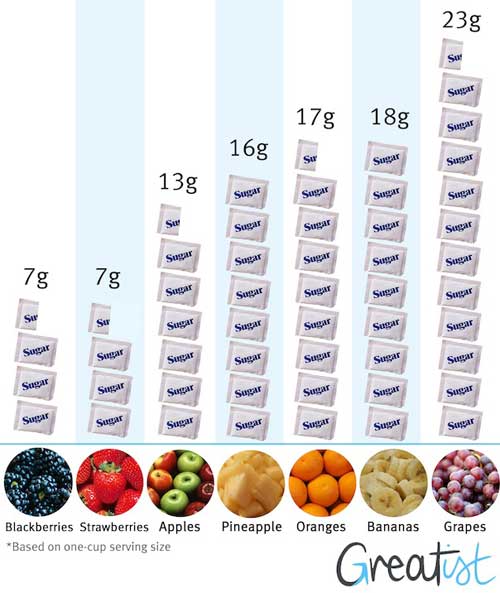By: Dr. Mercola (2012)
Source: Mercola.com
In 2010, the Corn Refiners Association (CRA) petitioned the U.S. Food and Drug Administration (FDA) to allow manufacturers the option of using the term “corn sugar” instead of “high fructose corn syrup” (HFCS) on food labels.
This renaming was a clever marketing ploy that would have easily hidden HFCS on labels, which is precisely what CRA wanted since so many people are now aware of the risks of consuming HFCS, and are seeking to avoid it in droves.
Fortunately, at the end of May, the FDA finally took a stand and told CRA they weren’t going to allow the re-naming of HFCS to “corn sugar” … but somehow CRA is still getting away with advertising it as such on TV …
No Corn Sugar on Labels, But OK on TV Commercials?
You have probably seen CRA’s marketing campaign on television. The commercials try to reduce shopper confusion and anxiety, showing actors who say they now understand that “whether it’s corn sugar or cane sugar, your body can’t tell the difference”.
The claim that all sugars are metabolized by your body in the same way is an outdated belief that has been shattered in more recent years by a growing body of scientific research, which I’ll get to shortly. However, the main issue is that while the FDA has stepped in to say that calling HFCS “corn sugar” is not acceptable, the Federal Trade Commission (FTC), whose job it is to decide whether or not ads aired on television are deceptive, has not.
The Consumerist asked the FTC to comment on the issue, but they refused, saying they would only issue a statement after an investigation had been conducted. But as The Consumerist pointed out, this doesn’t necessarily mean they are conducting one on this issue currently, or plan to in the future … For now, while the FDA says HFCS cannot be called corn sugar on food labels, the FTC still allows them to advertise it as such on TV!
Why the FDA Denied the “Corn Sugar” Naming Petition
In a letter response to CRA’s petition, the FDA gave salient reasons for denying the use of “corn sugar” to refer to HFCS, the first being that HFCS is a liquid syrup, not a granular, dried, crystalized food as the word “sugar” implies:
“FDA’s regulatory approach for the nomenclature of sugar and syrups is that sugar is a solid, dried, and crystallized food; whereas syrup is an aqueous solution or liquid food … FDA’s approach is consistent with the common understanding of sugar and syrup as referenced in a dictionary …,” they state.
“Consequently, the use of the term “corn sugar” for HFCS would suggest that HFCS is a solid, dried, and crystallized sweetener obtained from corn. Instead, HFCS is an aqueous solution sweetener derived from corn after enzymatic hydrolysis of cornstarch, followed by enzymatic conversion of glucose (dextrose) to fructose. Thus, the use of the term “sugar” to describe HFCS, a product that is a syrup, would not accurately identify or describe the basic nature of the food or its characterizing properties.”
The FDA also took issue with CRA’s attempts to eliminate the term corn sugar as an alternative name for dextrose, for which it is often used. For those who aren’t aware, dextrose is pure glucose and contains no fructose. For this reason, I recommend it as a safer alternative to most other sugars on the market. Even the FDA acknowledged that swapping corn sugar, which is often taken to mean “dextrose,” for HFCS could put people who are sensitive to fructose at risk:
“Moreover, “corn sugar” has been known to be an allowed ingredient for individuals with hereditary fructose intolerance or fructose malabsorption, who have been advised to avoid ingredients that contain fructose. Because such individuals have associated “corn sugar” to be an acceptable ingredient to their health when “high fructose corn syrup” is not, changing the name for HFCS to “corn sugar” could put these individuals at risk and pose a public health concern.”
It’s the Fructose, in Excess, That’s the Problem
It’s important to note that both sugar and HFCS are problematic, as they both contain similar amounts of fructose, the true culprit.
Sucrose (table sugar) is 50 percent glucose and 50 percent fructose. High fructose corn syrup (HFCS) is anywhere from 42 to 55 percent fructose depending on which type is used. Glucose is the form of energy your body is designed to run on. Every cell in your body uses glucose for energy, and it’s metabolized in every organ of your body; about 20 percent of glucose is metabolized in your liver. Fructose, on the other hand, can only be metabolized by your liver, because your liver is the only organ that has the transporter for it.
Since all fructose gets shuttled to your liver, and, if you eat a typical Western-style diet, you consume high amounts of it, fructose ends up taxing and damaging your liver in the same way alcohol and other toxins do. In fact, fructose is virtually identical to alcohol with regards to the metabolic havoc it wreaks. According to Dr. Robert Lustig, professor of pediatrics in the Division of Endocrinology at the University of California, fructose is a “chronic, dose-dependent liver toxin.” And just like alcohol, fructose is metabolized directly intofat—not cellular energy, like glucose. When you compare the health outcomes of fructose versus alcohol consumption, you end up seeing a very familiar pattern—the diseases they cause are virtually identical, according to Dr. Lustig and colleagues.
The reason why HFCS may, in fact, be even worse than table sugar, despite having similar fructose content, is due to its liquid form. When you consume fructose in liquid form, such as drinking a soda, it places even more of a burden on your liver. The effect on your liver is not only sped up but also magnified.
“Sugar is sugar” no matter what form it’s in, is a misstatement that can, quite literally, kill you—albeit slowly.
Is Coca-Cola’s Chief Scientific Officer in Touch with Reality?
In a commentary that would be almost comical if it weren’t true, the vice president and chief scientific and regulatory officer at Coca-Cola lashed out at critics who blame the soda industry for the obesity epidemic, and offered the perfect recipe for slimming down: exercise and low-calorie, no-calorie Coke, or full-calorie in smaller cans.
“Coca-Cola clearly has a role to play in developing solutions,” Applebaum said.ii “Helping people manage their calories is nothing new to us. … But it’s not just about options―it’s also about information. In 2009 we added calorie amounts on the front of nearly all of our packages to make it easier for people to choose beverages that are right for them.”
Applebaum added that Michelle Obama did the right thing by tapping celebrities like Beyonce to remind children that activities like dance can be just as entertaining as a video game.
Coca-Cola is not the sole cause of the obesity epidemic … but it’s certainly a major contributor. There’s no getting around the fact that, from a health perspective, drinking Coke or any soft drink is a disaster. Just one extra can of soda per day can add as much as 15 pounds to your weight over the course of a single year, not to mention increase your risk of diabetes by 85 percent.
Is Any Amount of Fructose Safe?
Fructose per se is not necessarily toxic – in small amounts, and especially when complexed with the vital food factors found within whole, organic and raw fruit There are instances when your body can use it. The problem is that people consume so MUCH of it, and in such a highly processed form, that it turns toxic by virtue of the fact that your body cannot use it. It simply gets shuttled into your cells and stored as fat.
So it’s mainly the MASSIVE DOSES you’re exposed to that make it dangerous.
If you want to shed excess pounds and maintain a healthy weight long-term, and RADICALLY reduce (and in many cases virtually eliminate) your risk of diabetes, heart disease and cancer, then start getting serious about restricting your consumption of fructose to no more than 25 grams per day. If you’re already overweight, or have any of these diseases or are at high risk of any of them, then you’re probably better off cutting that down to 10-15 grams per day.
I’ve also included a chart below of fructose levels in fruit to give you an idea of what 25 grams a day looks like.

Just remember, fruit is only one source, as fructose is a staple ingredient in the vast majority of sweetened beverages and processed foods of all kinds, from pre-packaged meals to baked goods and condiments. Fructose is in HFCS, yes, but it’s also in table sugar and these other sweeteners below, which are typically considered “healthy.” You’ve got to pay attention to all of them, as they are all adding to your fructose load.
To view the original article click here.
To reprint this article, visit the source website for reprinting guidelines.




